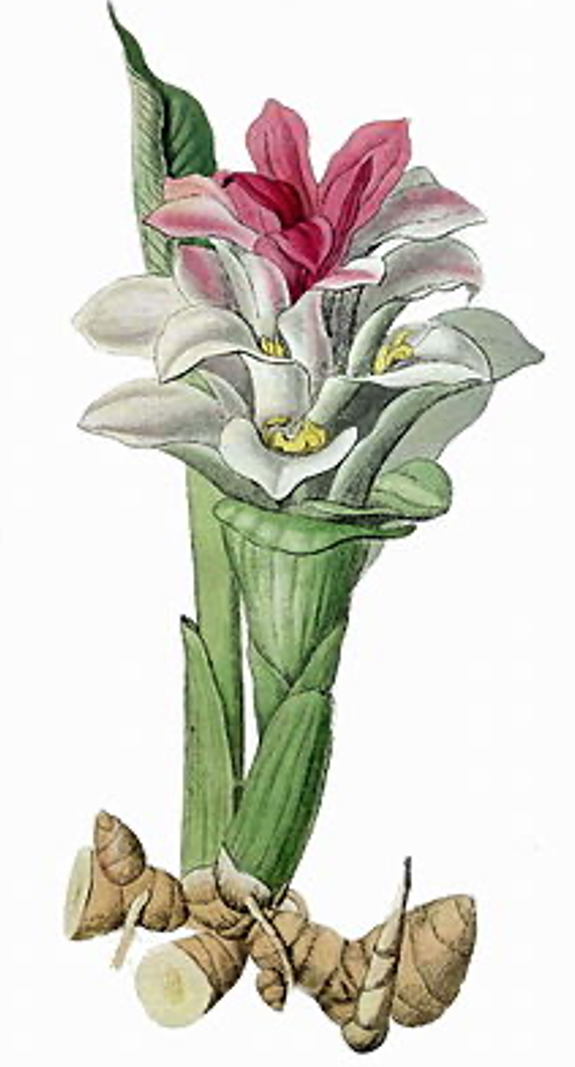Hooker's Green
by Karen Fang
Today, we go green with immortality. The University of Houston presents this series about the machines that make our civilization run, and the people whose ingenuity created them.
What makes a color become a metaphor? "Green with envy" is one example.
In ancient times Hippocratic medical theory held that emotion was tied to bodily fluids. Bile, a yellow-brown fluid in the liver, was thought to be related to jealousy; people with too much bile can have a greenish tinge to their skin. Actually bile helps digestion, but green's connection with jealousy survives in writing by Shakespeare, Chaucer, and Sappho. It's a vivid but false belief of psychophysiology, where the idea of being "green with envy" relies on a concept that is human rather than vegetable.
Plants, of course, are where green is most often seen, and in nature green has very different connotations. In Christian tradition green's ties with spring, growth and renewal makes it the color of Hope. This is quite different from bilious jealousy, but it reminds us that green's metaphors come from organic matter.

Hooker's Green Courtesy of Winsor Newton.
So it's interesting that despite green's ubiquity in nature, as a pigment green can be difficult to make. In the days before synthetic pigment, when paint and dye were made from minerals and other organic substances, green was one of the hardest colors to mix and keep stable. Because plants decay and blue often outlasts yellow, green hues can be more fleeting than the metaphors they inspire.
One shade of green, though, has a history that touches on all these traits of hope and jealousy, nature and ephemerality. Hooker's green was invented in the early 1800s by William Hooker, a gifted botanical illustrator whose beautiful renderings of fruit species earned him praise as the "greatest pomological artist of all time." He's often confused with a younger and better-connected man of the same name who was then director of Kew Gardens, the lovely botanical park southeast of London. I think that the fruit painter was a more talented artist than the Kew Gardens director, who was knighted, but because of the latter's social status sometimes Sir William Hooker wrongly gets credited with the older artist's work.

Illustration from The Paradisus Londonesis, an 1805 book illustrated by William Hooker, documenting cultivated plants in and around London (Wikipedia).
Did Mr. William Hooker the fruit painter go green with envy when he thought of his better-known junior? If he did, his triumph is the paintings that survive them both. For his beautifully accurate foliage, Hooker mixed Prussian blue, an early synthetic pigment, with gamboge, a voluptuous yellow stain made from the resin of Asian evergreen trees. The result is a dusky, cool green that darkens shadows and makes the waxy blue-green of pine needles, or lightens to the silver of thistle and sage. Hooker's green also is lightfast, meaning that it's stable for decades and centuries, with little degradation in hue. Ironically, by inventing a synthetic pigment to portray natural greenery, William Hooker the botanical artist painted plants and flowers that will never fade or die.
So whether or not fruit painter William Hooker envied the other, it's he who is a favorite on artists' palettes. We now know that the phrase, "green with envy," has no basis in fact. Instead, for Hooker's green, we should say 'green with immortality.'
I'm Karen Fang, for the University of Houston, where we're interested in the way inventive minds work.
*Note that our William Hooker (1779-1832), unlike the Kew Gardens director (1785-1865), was so overlooked by contemporary history that it is difficult to find a single portrait of him.
Hooker's Apple Paintings (at the Royal Horticultural Society, Britain)
Julia Buckley, "William Hooker and a case of mistaken identity." Kew Gardens, November 25, 2016.
Katy Kelleher, "Hooker's Green: The Color of Apple Trees and Envy." The Paris Review, October 3, 2018.
Michel Pastoureau, Green: The History of a Color. Princeton University Press, 2014.
See also these previous Engines episodes on color:
Purple:
John Lienhard, "Williams Perkin & Dye", The Engines of Our Ingenuity, Episode #2059.
Celeste Williams, "Purple Men", The Engines of Our Ingenuity, Episode #3193.
Black:
John Lienhard, "The Color Black", The Engines of Our Ingenuity, Episode #3222.
This episode was first aired on September 1, 2020